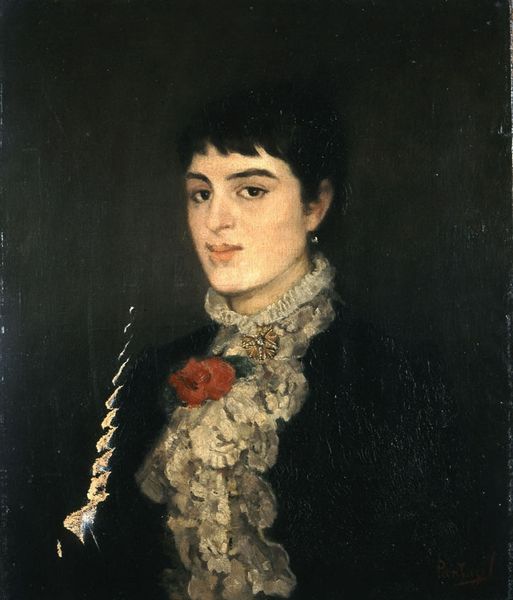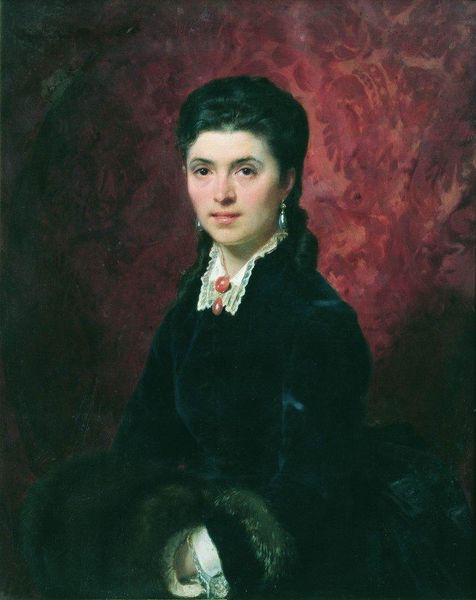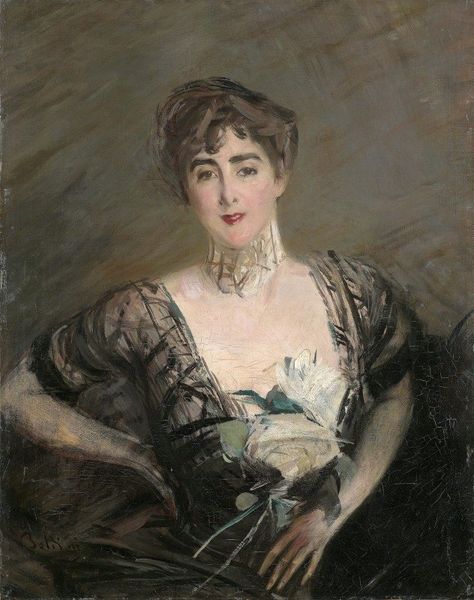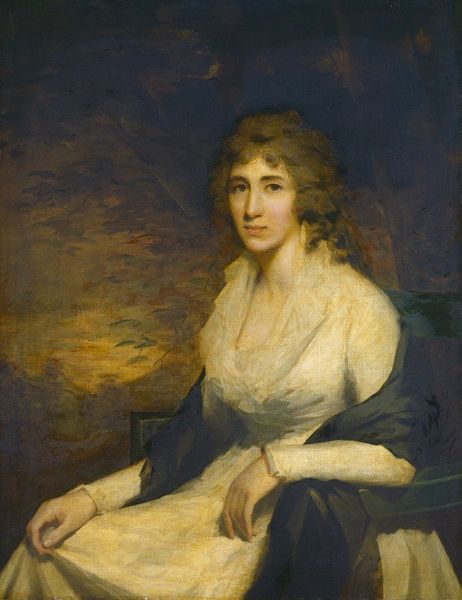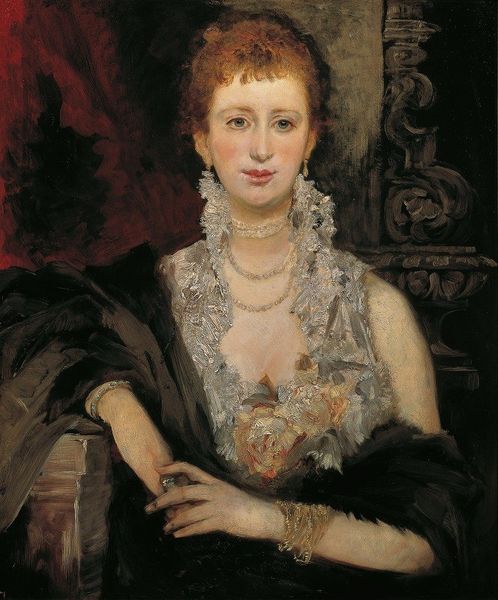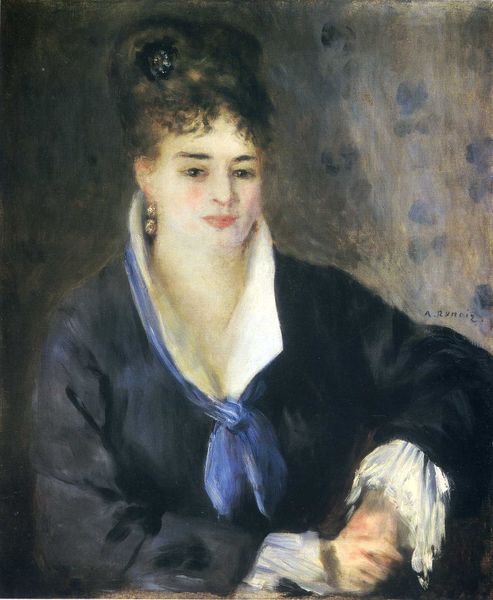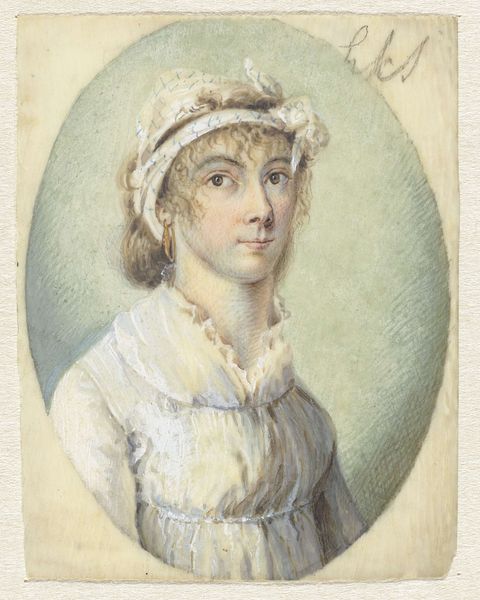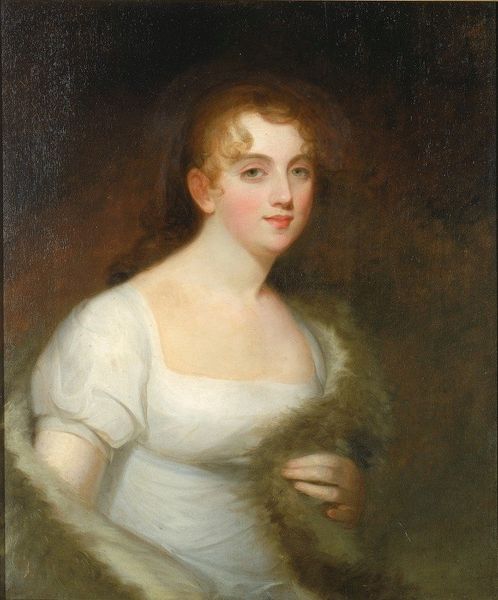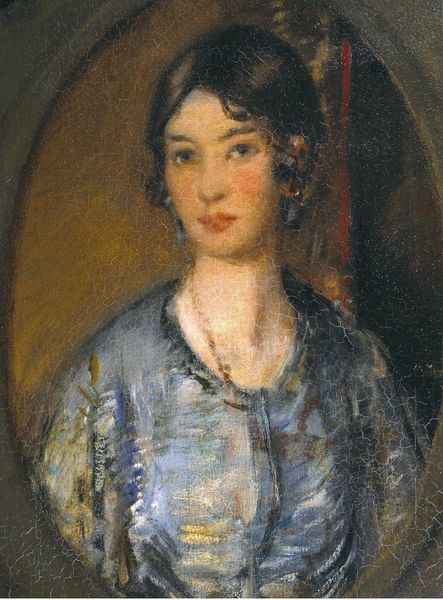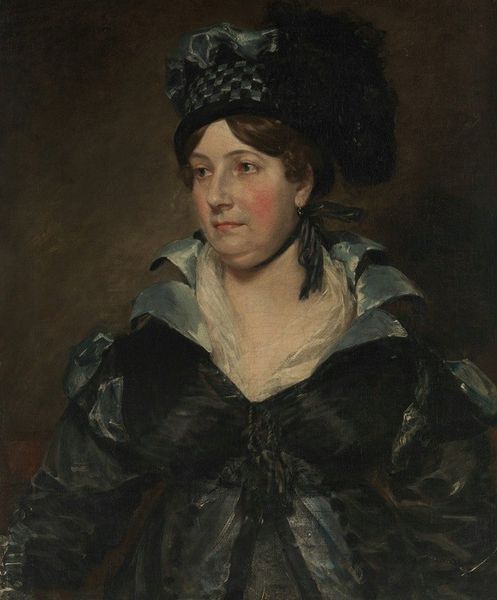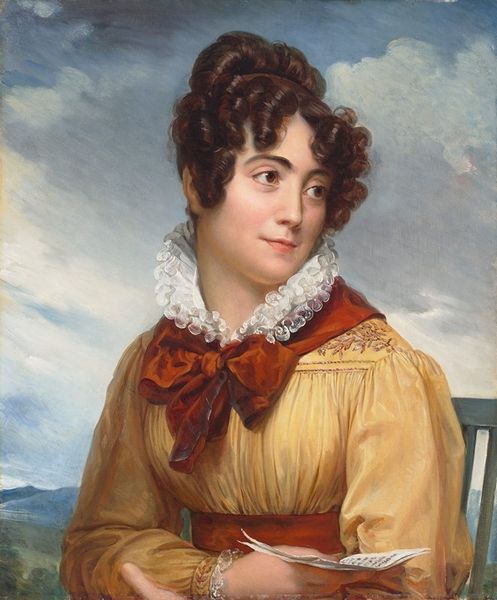
Copyright: Public Domain: Artvee
Editor: So, this is Hans Canon's "Maria Freifrau von Zehmen," painted in 1882, with oil on canvas. The lace ruff is really striking. What can you tell me about it? Curator: The lace immediately directs my attention to the modes of production and consumption at play. We're not just looking at a portrait; we are seeing a complex representation of labor, both visible and invisible. Consider the material reality of lace in the 19th century. It required highly skilled labor, primarily from women, and represented a significant economic investment. Editor: Right, so the artist is deliberately showing wealth and status through the subject's clothes, particularly this extravagant ruff? Curator: Precisely. But also, consider the act of painting itself. Canon used oil paint to mimic the texture and intricacy of the lace, transforming the labor of the lace maker into the labor of the artist. How does the rendering of fabric and the value associated with it impact how we view the sitter? Editor: Hmm, I suppose I hadn't thought about it that way. So, by meticulously portraying the lace, the artist is actually commenting on labor practices and material culture. It becomes more than just a pretty collar. Curator: Exactly! The materials speak volumes. This piece also pushes the boundary between what we consider "high art" - painting - and craft through careful material replication. In thinking through production, are we only speaking of making or also reception? Editor: Interesting. Looking at it through that lens definitely adds a layer of complexity. Thank you! I will keep an eye on these things from now on.
Comments
No comments
Be the first to comment and join the conversation on the ultimate creative platform.

